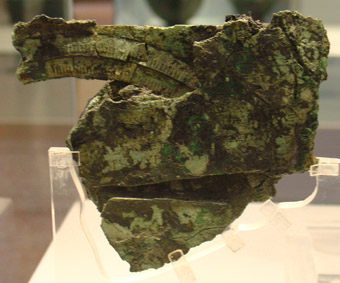Just a quick post to flag up an intriguing conference that starts today. It's called the International Symposium on History of Machines and Mechanisms, and it runs from 10-14 November in Tainan, Taiwan.
It's quite an unusual conference because most of the participants are engineers rather than historians, and the talks cover topics ranging from ancient Chinese windmills to Roman time measurement to steam locomotives in Mexico. I'll try to find out more about the talks presented and post on those at a later date, but I do know that Teun Koetsier, a mathematician at the Free University in Amsterdam, will be speaking about the Antikythera mechanism.
Rather than presenting new results, he'll be discussing the different approaches used to study the mechanism over the past few decades, in particular the comparison between Michael Wright, the museum curator who worked single-handedly to build a reconstruction of the device in his home workshop, and Tony Freeth, the filmmaker who had an international team of scientists and state-of-the-art imaging technology at his disposal. You can see his full paper here.
This picture is of the third biggest piece of the Antikythera mechanism. It's not quite as impressive as the biggest fragment that's normally pictured, but if you look closely you can see a curved double scale - this is the dial that was on the front of the device. The inner ring was a zodiac scale, divided into 360 degrees, and the outer ring was a 365-day calendar. It's the only example of a graded scale that we have from the ancient world. On the front of this fragment you can also see traces of Greek inscriptions, from a bronze plate that originally would have covered the front of the mechanism.